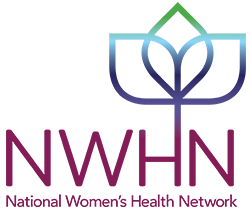Asbestos-contaminated talc in household products continues to sicken and kill innocent consumers who don’t know the cancer-causing danger lurking in their medicine cabinet. Most people don’t know that the talc found in everyday products like baby powder and makeup may be contaminated with asbestos, with devastating results.
Talc is used in many personal care products because it can help products absorb moisture, make makeup opaque, and improve a product’s feel. Talc is a natural mineral that often forms near asbestos. During the mining process, talc and asbestos can cross-contaminate each other as they are removed from the earth. Because there is there is no known safe level of asbestos exposure, once talc is tainted with asbestos, it is hazardous and a deadly carcinogen.
Talc is found in many cosmetic products that women use in the most sensitive areas of their bodies, including deodorants. Asbestos-contaminated talc is an urgent health hazard in consumer cosmetic and personal care products. For example, a 2016 University of Virginia study found that Black women who used talcum powder for genital hygiene had more than a 40 percent increased risk of ovarian cancer.
Why is asbestos contamination allowed in makeup and personal care products sold in this country? The simple reason is that the U.S. does not regulate cosmetics and their ingredients. Minus a few exceptions, federal law does not require companies that sell cosmetics and other personal care products in the19 U.S. to get approval from the Food and Drug Administration (FDA) before their products go on the market. In fact, U.S. companies are not required to list all of their cosmetic products’ ingredients, to test their products for safety, use good manufacturing practices to prevent contamination, or even to recall products they know are dangerous. As a result, many companies get away with using contaminated ingredients.
This lack of regulation means that asbestos-contaminated talc that been neither screened nor tested for safety can end up on a shelf at your local pharmacy, grocery store, or mall. Unfortunately, this scenario has occurred several times in the recent past, putting hundreds and thousands of women’s and girl’s lives at risk. Independent investigations have found asbestos-contaminated talc-based products for sale by companies including Claire’s, Beauty plus Global, and Johnson and Johnson.
Over the past few years, federal legislation has been introduced that could result in either restrictions or a total ban on the use of talc in cosmetics. Until Congress passes such legislation or other measures to protect consumers from contaminated talc, the NWHN recommends that consumers steer clear of talc-based products and use safer alternatives. There are several talc alternatives that are not at risk of being contaminated with asbestos. Utilizing resources like the Environmental Working Group’s Skin Deep Database, which allows users to search for ingredients, products , and brands for their safety may be helpful for consumers interested in making healthier choices. The National Women’s Health Network and other consumer advocates provide educational resources on the dangers of talc in cosmetics to help women and consumers make safe choices.
M. Isabelle Chaudry, J.D., is the Senior Policy Manager for the NWHN and an advocate for marginalized communities of women. Isabelle actively lobbies and provides expert testimony before Congress and the FDA for women’s health and cosmetic policies. She is an LL.M candidate in International Human Rights and Humanitarian Law and a Board Member for Women’s Voices for the Earth.





